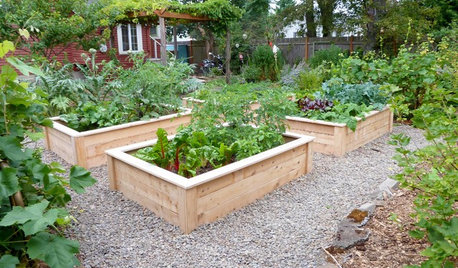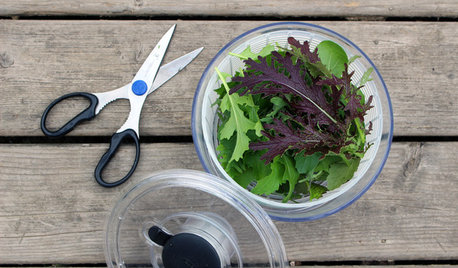Tomato Plant troubleshooting help!
Jesse_83
13 years ago
Related Stories

EDIBLE GARDENSSummer Crops: How to Grow Tomatoes
Plant tomato seedlings in spring for one of the best tastes of summer, fresh from your backyard
Full Story
LIFEKitchen Traditions: Tomato Season Meets a Family Legacy
Somewhere a Sicilian great-great-grandmother is smiling at a bowl of American-made sauce
Full Story
ARCHITECTUREHouzz Tour: Fresh Ideas in a Former Tomato Packing Shed
A formerly metal-clad structure is now a beautiful wood home designed to capture the light and preserve open space
Full Story
PETS6 Ways to Help Your Dog and Landscape Play Nicely Together
Keep your prized plantings intact and your dog happy too, with this wisdom from an expert gardener and dog guardian
Full Story
Guest Picks: Give Your Home a Helping of Spring Greens
Celebrate garden growth with this collection of housewares and gardening gear in the shades of budding plants
Full Story
GARDENING GUIDES12 Tips to Help You Start an Edible Garden
Get on your way to growing your own vegetables with a raised bed or a few containers on the patio
Full Story
MOST POPULAR7 Ways to Design Your Kitchen to Help You Lose Weight
In his new book, Slim by Design, eating-behavior expert Brian Wansink shows us how to get our kitchens working better
Full Story
FARM YOUR YARDThe 8 Tools That Help Bring the Farm to Your Table
Vegetable gardeners get a big assist from these essential helpers
Full Story
HOUZZ TOURSMy Houzz: Saturated Colors Help a 1920s Fixer-Upper Flourish
Bright paint and cheerful patterns give this Spanish-style Los Angeles home a thriving new personality
Full Story
EDIBLE GARDENSGarden BFFs? Why Your Vegetables Are Begging for Companion Plants
Foster friendships among plants for protection from pests, pollination support and color camaraderie
Full StoryMore Discussions






homehydro
Jesse_83Original Author
Related Professionals
Glen Ellyn Landscape Architects & Landscape Designers · Panama City Landscape Architects & Landscape Designers · Barrington Landscape Contractors · Cliffside Park Landscape Contractors · East Chicago Landscape Contractors · East Haven Landscape Contractors · Middle River Landscape Contractors · Oxnard Landscape Contractors · Peachtree City Landscape Contractors · Placerville Landscape Contractors · Sun City Center Landscape Contractors · The Villages Landscape Contractors · Wells Landscape Contractors · West Haverstraw Landscape Contractors · La Puente Outdoor Lighting & Audio Visual Systemsgrizzman
homehydro
homehydro
Jesse_83Original Author
grizzman
homehydro
homehydro